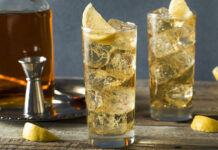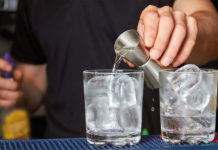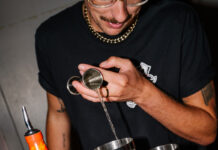The right back-bar fridge is necessary for venues to meet customer expectations, firms say

THERE are some things customers visiting the on-trade might be willing to forgive – but a lukewarm drink probably isn’t one of them.
And with competition for custom fiercer than ever – and customers keeping a keen eye on quality – it is in operators’ best interests to ensure all drinks leaving the bar are stored and served at the right temperature.
But refrigeration is about more than just temperature control.
In fact, refrigeration specialists insisted that the right equipment can actually help operators grow their sales.
Malcolm Harling of Williams Refrigeration said the right back-bar equipment “is essential to drive sales and meet customer demand”.
“Back-bar refrigeration needs to be designed to deliver the optimum combination of aesthetics and functionality, ie. it needs to maximise the display area and look good while delivering high performance refrigeration,” he said.
Harling added that there “is an increasing trend for refrigeration to be tailored to suit a venue’s look, desired footprint and application”.
Check the equipment is robust, as it has to survive a punishing level of wear and tear.
Steve Loughton of catering equipment firm Hoshizaki agreed.
He said choosing the correct equipment “is crucial for operators working in a busy venue”.
“As well as acknowledging that space is at a premium, operators need to ensure that their drinks offerings are in the direct sightline of consumers and are displayed in the most visually appealing way to boost incremental sales,” said Loughton.
“Units with glass doors allow consumers to see the chilled drinks selection, while counter-top displays allow them to view the full range on offer.”
Similarly, Robert Campbell, managing director of catering equipment firm Quality Equipment Distributors (QED), said back-bar coolers “have become the norm” and serving drinks at the correct temperature “is tantamount to the [operator] getting repeat sales”.
“Back-bar coolers normally operate from 2°C to 6°C, giving a product temperature of 3°C to 4°C,” he explained.
“Bottled and canned products can take from five to six hours to achieve the correct drinking temperature, so operators should ensure they have sufficient stock for the whole evening and top up regularly.”
So what should operators looking to upgrade their refrigeration kit look for in a back-bar fridge?
Campbell took the view that, alongside doors “that allow maximum vision of the product”, operators should look for units that are “fan assisted for quick pull down of temperature and well ventilated”.

The way the unit is lit is also important, firms said.
Harling of Williams Refrigeration said effective lighting will ensure an ‘eye-catching’ back-bar refrigeration display.
He added that LED lights should be considered as they can “enhance [the] display and are more energy efficient than traditional bulbs”.
This was echoed by Campbell of QED, who said LED lights are key to achieving energy efficiency.
“They do not give off heat, which a conventional light bulb does, and are more economical to run,” he said.
Ensuring a back-bar fridge has adjustable shelves is another important consideration, according to Harling of Williams Refrigeration, who said such a set-up allows operators to adjust when necessary to accommodate different- sized drinks bottles.
But above all else, Harling emphasised the need for a unit that is well built, and that can stand up to regular heavy use.
“Coping with the demands of a busy venue means back-bar refrigeration has to be robust and operate efficiently, to maintain temperature as bottles are taken out, stock replenished and doors continually opened and closed,” he said.
“Check the equipment is robust, as it has to survive a punishing level of wear and tear.
“It also needs to look stylish and display premium bottled drinks attractively.”
Back-bar fridges must combine aesthetics with functionality.
Once a new back-bar fridge is selected and installed, it’s important to establish a thorough maintenance routine.
Campbell of QED said there is “a definite link between good maintenance and longevity of your back-bar cooler”.
Simple steps that any operator can follow include ensuring there is good air flow around the cleaner, and keeping the condenser clean by vacuuming it regularly, according to Campbell.
Loughton of Hoshizaki agreed that regular maintenance can “help increase the lifespan of a unit”.
“Training staff to not only look after the equipment properly, but how to inspect a unit thoroughly for dirt build up, spillages, splashes and dust will also enhance a unit’s life expectancy,” he said.



















